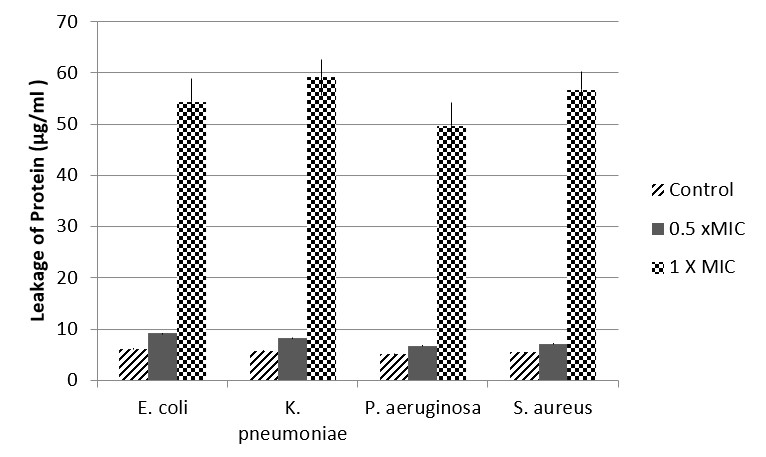Abstract
High resistance to antimicrobials is associated with biofilm formation responsible for infectious microbes to withstand severe conditions. Therefore, new alternatives are necessary as biofilm inhibitors to control infections. In this study, the antimicrobial and antibiofilm activities of Fagonia indica extracts were evaluated against MDR clinical isolates. The extract exhibited its antibiofilm effect by altering adherence and disintegration of bacterial cell wall. Fagonia indica has antibacterial effect as minimum inhibitory concentration (MIC) values ranging from 125 to 500 µg mL-1 and minimum bactericidal concentration (MBC) value was 500-3000 µg mL-1 against multidrug resistant (MDR) clinical isolates. The extract exhibited its antibiofilm effect by altering adherence and disintegration of bacterial cell wall. Fagonia indica had antibacterial effect as minimum inhibitory concentration (MIC) values ranging from 125 to 500 µg mL-1 and minimum bactericidal concentration (MBC) value was 500-3000 µg mL-1 against MDR isolates. The maximum inhibitory effects of Fagonia indica chloroform extract on biofilm formation was observed on Staphylococcus aureus (71.84%) followed by Klebsiella pneumoniae (70.83%) after 48 hrs showing that inhibition is also time dependent. Our results about bacterial cell protein leakage indicated that MDR isolates treated with chloroform extract of Fagonia indica showed maximum protein leakage of K. pneumoniae (59.14 µg mL-1) followed by S. aureus (56.7 µg mL-1). Cell attachment assays indicated that chloroform extract resulted in a 43.5-53.5% inhibition of cell adherence to a polystyrene surface. Our results revealed that extracts of Fagonia indica significantly inhibited biofilm formation among MDR clinical isolates, therefore, could be applied as antimicrobial agents and cost effective biofilm inhibitor against these MDR isolates.
Keywords:
biofilm inhibitors; biofilm formation; MDR; antibacterial activity

 Thumbnail
Thumbnail
 Thumbnail
Thumbnail
 Thumbnail
Thumbnail


